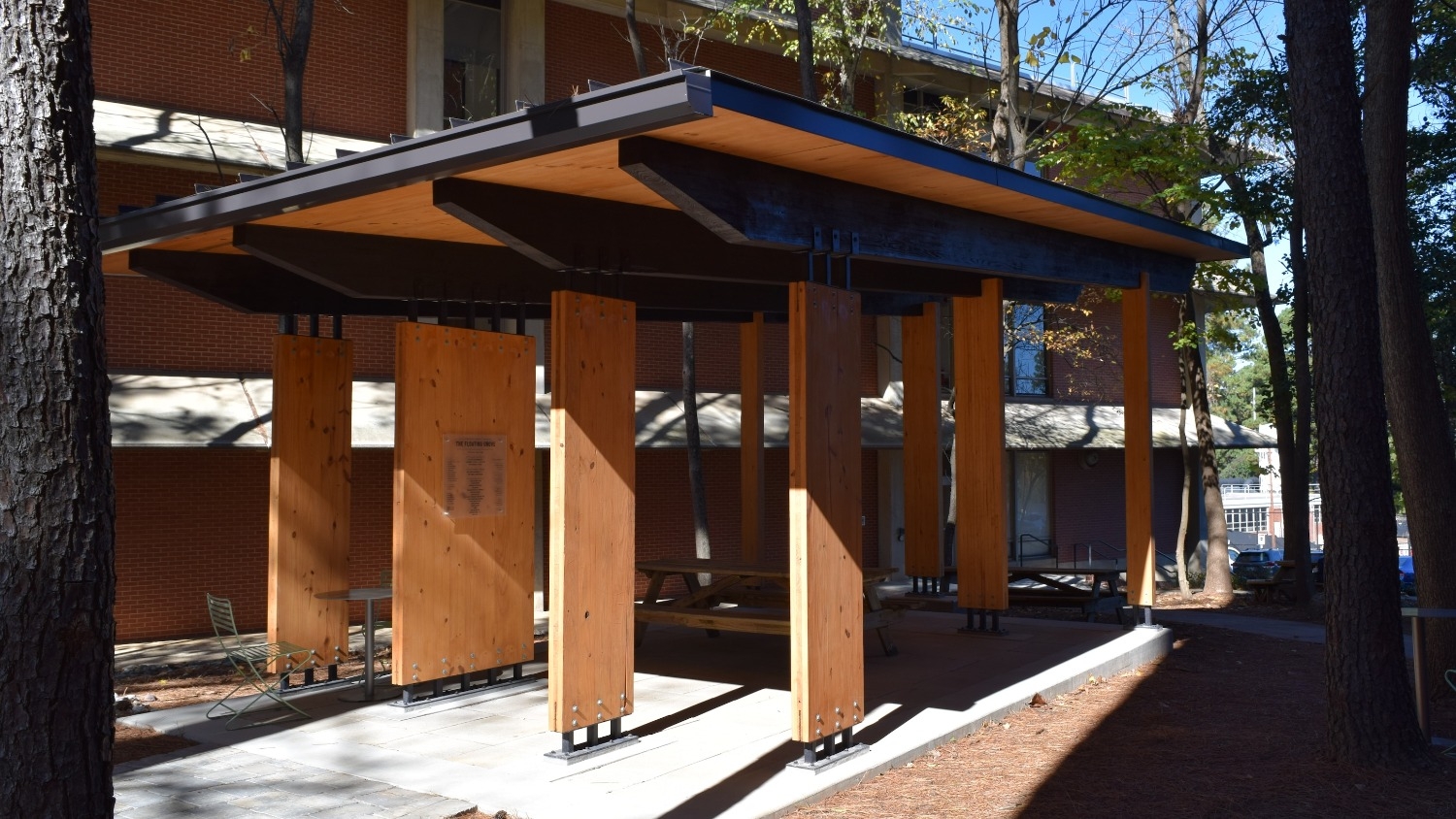GD Professor Helen Armstrong speaks at AIGA
Student interview with Helen Armstrong, Associate Professor of Graphic Design – by April Maclaga
This fall, the College of Design welcomed Associate Professor of Graphic Design Helen Armstrong to its faculty. Helen brings with her a passionate interest in design education and participatory design systems. Helen is a practicing designer, principal of her company Strong Design, and published author. In October, Helen spoke at the 2015 AIGA Design Conference in New Orleans.
AIGA (the American Institute of Graphic Arts) was founded in 1914 and is the largest and oldest professional design organization for leading design practitioners and advocates. AIGA embraces all forms of communication design and works to advance design practices in business and society by promoting understanding of design, defining global practices and professional ethics, and inspiring the public and designers alike.
How did you get started in graphic design?
In the 90s, I was working on a PhD in English Literature at the University of Tennessee. My area of emphasis was identity theory. I got to a point midstream in the degree in which I really missed the making piece of my creative process.
I was looking around for alternatives to the English PhD when I saw a write-up of the University of Baltimore Publication Design Program. I’d done a lot of publication work over the years, so I called the director. I interviewed, submitted a portfolio and they gave me a scholarship. I then moved to Baltimore and completed the publication design MA.
How did you get into your current role in academia?
After grad school, I started working at Johns Hopkins Medicine in Baltimore as a designer, then for a studio called NCSDO (North Charles Street Design Organization), and later for another studio, Rytter Design. Then a large ad agency in Baltimore asked me to be their creative director—a dream job. And I actually accepted the job and then realized this was not what I wanted to do. Instead, I wanted to go back and complete an MFA. I had been teaching a theory course at MICA as an adjunct over the last year so that played into my decision, as well. I applied to MICA’s MFA program, and then developed the material from my theory course into a book. That’s how I got back into academia.
What experiences have shaped your view of design?
My background in writing has greatly informed my perspective on design. An appreciation for language and storytelling is key to my design practice.
How would you describe your approach to design?
I was heavily influenced at MICA by DIY maker culture. It was huge in Baltimore when I started grad school. The social issues of the city contributed to my own identity as a designer and the needs of a designer within an urban context. While in Baltimore, I grew interested in the democratization of design, design as a force with which anyone can engage. I also became intrigued by community building. Those two things together are what drew my interest in participatory design.
I think of designers as facilitators of communities. In my mind participatory design is a way of building a community of people. This is a key role for designers within society right now.
How did your work at the AIGA conference fit with this?
Helen served as co-chair of the AIGA Design Educators Steering Committee from 2013-2015. At the 2015 AIGA Design Conference, Helen co-led the AIGA Design Educators Conference, a preconference for the Design Conference, along with co-chair Allan Chochinov. Leading the town hall meeting tied into research for Helen’s upcoming book, Digital Design Theory: Essential Texts for the Graphic Designer, which examines how computation has affected graphic design methodology.
As co-chair of the AIGA Design Educators Community Steering Committee over the last three years, I oversaw biannual design education conferences hosted by various institutions, the AIGA educator grant process, and, with the support of the committee members, launched design education initiatives including a new, much-needed AIGA design education journal. This experience helped me to get to know design educators from many institutions and have a good sense of the current state of design curriculum in the U.S. At the conference, I led a town hall meeting with Allan Chochinov, director of SVA’s MFA in Products of Design program. We asked attendees to tweet what currently excited them about design and what keeps them up at night. The results appeared on a Twitter wall and incited the resulting discussion. This is a nice example of my practice generally: I set up systems that encourage participants to contribute and share content, thereby strengthening communities.
Later in the conference I moderated a panel entitled: “Sci-Fi Meets Reality: Preparing Students for Super Intelligence, Mind-uploading, and Robotic Life.” The panelists included James Tichenor, a lead designer of the Microsoft HoloLens project. In the last few years my research has begun to focus on how computation affects design methodologies and how that, in turn, restructures our design deliverables. I just finished editing a compilation on this topic: Digital Design Theory: Reading in the Field (Princeton Architectural Press, spring 2016). Crafting participatory design systems led to my new interest in building systems for supporting virtual reality environments or even including artificial intelligence as a creative partner.
What interesting takeaways did you have from the conference?
Most of the presentations at the conference addressed platforms or experiences that incited wonder or curiosity in the users. I found that fascinating. My takeaway was that this celebration of very human emotions—wonder, curiosity—was a reaction to impending technological forces —artificial intelligence, autonomous weapons, etc. Although I found it inspiring to take a moment to celebrate humanity, it was a little disappointing that, at the conference, there was little talk of how we could actually shape these technological forces through design.
You joined the Wolfpack this year, what inspired you to come here teach?
The reputation of the graphic design program. I was familiar with the work of the faculty and attracted to a large research institution.
What do you find most exciting about design? Challenging?
Graphic designers have to live in the present but always have an eye out for the future. We are not a discipline that can ignore what is happening in the culture and grow stale. This is what infuses graphic design with energy and vision.
In terms of a challenging issue, the range of mediums in which we work makes it hard for non-designers to understand the discipline and sometimes even makes it difficult for designers to communicate their own practices.
What advice would you give to incoming designers?
Curiosity. The desire to continually learn and go the extra mile to understand content and context no matter what the project. If designers don’t have that natural curiosity, they will burn out quickly. Their practice has to feed an innate curiosity.
Interview by April Maclaga


